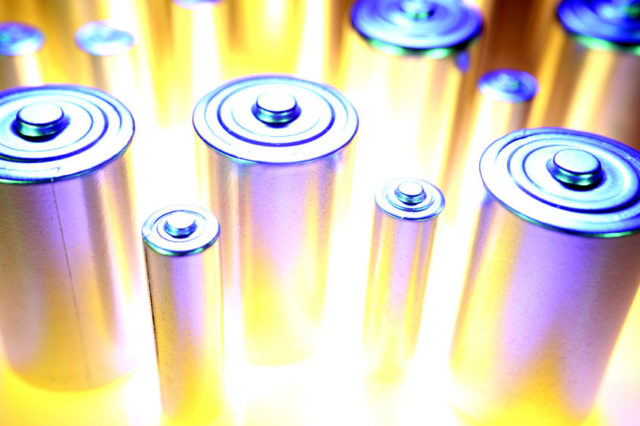
With renewables and clean sources forming a vital part of the global energy mix, lithium-ion battery market has emerged as quite a game changer in the overall energy cosmos.
Touted as the single most important component in the portable electronics revolution, lithium-ion batteries in the past few decades have paved the way for innovations such as mobiles & smartphones.
In fact, it has been reported that there are more mobile handsets powered by rechargeable lithium-ion batteries than there are people, which in turn is favorably impacting the rapid commercialization of this business sphere. Signifying the robust growth potential, the global lithium-ion battery market in 2017 gathered a remuneration of over $24 billion in 2017.
Electric vehicles to prominently drive lithium-ion battery adoption
Further registering exponential growth from the rising popularity of electronic products such as laptops, tablets, and smartwatches, lithium-ion battery market has been viewed to gain immense traction from the new wave of electric vehicles.
With more EVs expected to hit the roads by 2040 than the fossil fuel ones, the electric vehicles trend has been the newest catalyst proliferating the commercialization matrix of lithium-ion battery market at an unprecedented rate in the recent years.
With such a vast and complex value chain, it is quite overt that lithium-ion batteries themselves are not new and have been mass produced since the early 90’s. However, within the realm of battery cells, the EV application has led this industry to evolve into a standalone sector with tremendous growth potential.
Estimates claim that, with more than 550,000 EVs being sold across the globe in 2015, electric car registrations witnessed a remarkable 70% surge from the previous year’s registrations. Recently in 2017, the global sales climbed further to 54%, in turn helping EVs in remaining on track to reach the SDS target.
The International Energy Agency further forecasts the number of EVs to hit 125 million by 2030, claiming that government policies will continue to remain as the linchpin for their remarkable adoption.
The aforementioned data significantly goes on to validate that lithium-ion batteries are here to be the technology of choice in the ensuing years as well. A report compiled by Global Market Insights, Inc., further throws light on the same and claims the global lithium-ion battery market to be a whopping 60-billion-dollar business in the coming six years.
China to exhibit robust growth potential in the regional spectrum of lithium ion battery market
Outperforming the US in 2016, China emerged as the largest electric car market by far, housing 40% of the global EVs and more than double that of in the United States. To be precise, according to the reports published by the EIA, China accounted for EV sales over 336,000 in 2016, while the US was pegged at over 159,000.
Given the positive outlook, it goes without saying that the current lithium-ion battery market uptake in China, is largely influenced by the growing adoption of consumer electronics, EVs and supportive governmental policies. The US meanwhile, remains at the regional forefront, and accounted for more than 80% of the North America llithium-ion battery industry share in 2016.
China’s contribution to the lithium ion battery market can also be attributed to the government’s efforts to reduce pollution from battery waste. In 2016 for instance, the Government of China introduced a spate of regulations to eliminate poisoning from the lead disposal industry.
Japan is emerging as another prominent growth ground for potential investors, on account of the positive outlook towards the electrification trend in the automotive sector and robust smart & portable devices demand. If reports are to be believed, Japan in the year 2016 accounted for more than 13 gigawatts of automotive lithium ion cell manufacturing capacity – representing a colossal upsurge of 237% from the 2014 level.
Governmental actions in limiting GHG emissions and utilisation of renewable energy sources are expected to further propel Japan lithium ion battery market share. Which for the record, registered a y-o-y growth of more than 8% over 2018-2024.
Speaking of the governmental regulations, it is imperative to mention that, the rapid demand and higher environmental and human cost of extracting lithium has given rise to recycling plant setups.
Recently for instance, SungEel MCC has unveiled its new lithium-ion battery recycling plant with a capacity to recycle over 5,000 tons of spent Li-ion batteries. The company claims that with the consumption of both lithium and cobalt outpacing the supplies in recent years, recycling these batteries will gain massive momentum.
With the already rising demand for smaller & lightweight batteries that charge in few minutes – or ever seconds, and those that won’t catch fire or explode, the global lithium-ion battery industry is likely to witness a notable surge in R&D actives and product innovation trends.
The competitive landscape of this business sphere is further expected to remain oligopolistic in nature with the dominant industry players going the whole hog to establish global presence. At present, Sociedad Química y Minera, Albemarle Corporation, Ganfeng Lithium, and Tianqi Lithium are the four companies dominating the global lithium supply.
With lithium-ion rechargeable batteries further powering the international space stations, submarines, and electric aircrafts, the global lithium-ion battery industry share is expected to expand considerably, with the robustly growing application spectrum.
Quite undeniably, these batteries have become essential for powering electric vehicles and for storing energy generated by the wind turbines and solar power, which is expected to upsurge the commercialization potential of global lithium-ion battery market by several notches in the ensuing years.
